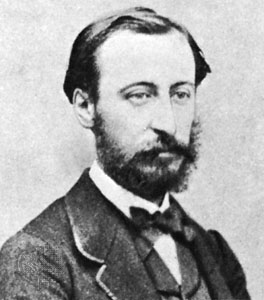Contents
This article needs additional citations for verification .(February 2024) |
| |||
|---|---|---|---|
| +... |
This is a list of music-related events in 1806.
This article needs additional citations for verification .(February 2024) |
| |||
|---|---|---|---|
| +... |
This is a list of music-related events in 1806.
August 5 is the 217th day of the year in the Gregorian calendar; 148 days remain until the end of the year.
July 29 is the 210th day of the year in the Gregorian calendar; 155 days remain until the end of the year.
May 29 is the 149th day of the year in the Gregorian calendar; 216 days remain until the end of the year.
This is a list of music-related events in 1820.

Juan Crisóstomo Jacobo Antonio de Arriaga y Balzola was a Spanish Basque composer. He was nicknamed "the Spanish Mozart" after he died, because, like Wolfgang Amadeus Mozart, he was both a child prodigy and an accomplished composer who died young. They also shared the same first and second baptismal names; and they shared the same birthday, 27 January.
This is a list of notable events in music that took place in the year 1731.
Chorale settings refer to a wide variety of musical compositions, almost entirely of Protestant origin, which use a chorale as their basis. A chorale is a simple melody, often based on Gregorian chant, written for congregations to sing hymns. Chorale settings can be vocal, instrumental, or both.
In music, a chorale concerto is a short sacred composition for one or more voices and instruments, principally from the very early German Baroque era. Most examples of the genre were composed between 1600 and 1650.
The year 1703 in music involved some significant events.
Johann Gottlieb Graun was a German Baroque/Classical era composer and violinist, born in Wahrenbrück. His brother Carl Heinrich was a singer and also a composer, and is the better known of the two.

Concerto in E-flat, inscribed Dumbarton Oaks, 8.v.38 (1937–38) is a chamber concerto by Igor Stravinsky, named for the Dumbarton Oaks estate of Robert Woods Bliss and Mildred Barnes Bliss in Washington, D.C., who commissioned it for their thirtieth wedding anniversary. Composed in Stravinsky's neoclassical period, the piece is one of Stravinsky's two chamber concertos and is scored for a chamber orchestra of flute, B♭ clarinet, bassoon, two horns, three violins, three violas, two cellos, and two double basses. The three movements, Tempo giusto, Allegretto, and Con moto, performed without a break, total roughly twelve minutes. The concerto was heavily inspired by Bach's set of Brandenburg Concertos, and was the last work Stravinsky completed in Europe, started in spring 1937 at the Château de Montoux near Annemasse, near Geneva, Switzerland, and finished in Paris on March 29, 1938.

The piccolo trumpet is the smallest member of the trumpet family, pitched one octave higher than the standard B♭ trumpet. Most piccolo trumpets are built to play in either B♭ or A, using a separate leadpipe for each key. The tubing in the B♭ piccolo trumpet is one-half the length of that in a standard B♭ trumpet. Piccolo trumpets in G, F, and even high C are also manufactured, but are rarer.

Johann Nepomuk Fuchs was an Austrian composer, opera conductor, teacher and editor. His editorial work included an important role in the preparation of the first complete edition of Franz Schubert's works. He was an older brother of the composer Robert Fuchs.

Baroque music refers to the period or dominant style of Western classical music composed from about 1600 to 1750. The Baroque style followed the Renaissance period, and was followed in turn by the Classical period after a short transition. The Baroque period is divided into three major phases: early, middle, and late. Overlapping in time, they are conventionally dated from 1580 to 1650, from 1630 to 1700, and from 1680 to 1750. Baroque music forms a major portion of the "classical music" canon, and is widely studied, performed, and listened to. The term "baroque" comes from the Portuguese word barroco, meaning "misshapen pearl". The works of Antonio Vivaldi, George Frideric Handel and Johann Sebastian Bach are considered the pinnacle of the Baroque period. Other key composers of the Baroque era include Claudio Monteverdi, Domenico Scarlatti, Alessandro Scarlatti, Alessandro Stradella, Tomaso Albinoni, Johann Pachelbel, Henry Purcell, Georg Philipp Telemann, Jean-Baptiste Lully, Jean-Philippe Rameau, Marc-Antoine Charpentier, Arcangelo Corelli, François Couperin, Johann Hermann Schein, Heinrich Schütz, Samuel Scheidt, Dieterich Buxtehude, Gaspar Sanz, José de Nebra, Antonio Soler, Carlos Seixas, Adam Jarzębski and others, with Giovanni Battista Pergolesi being the most prominent Baroque composer of sacred music.
Sacred concerto is a 17th-century genre of sacred music, characterized as settings of religious texts requiring both vocal soloists and obbligato instrumental forces for performance. Starting from Italian models, the genre flourished primarily in Germany. It is a broad term for various genres of chamber concerto for a small number of voices and instruments popular in Germany during the 17th century and prefiguring the late baroque church cantata and solo sacred cantata forms.

The Piano Concerto No. 1 in D major, Op. 17, by Camille Saint-Saëns was composed in 1858, when the composer was 23 and dedicated to Marie Jaëll. It is the first piano concerto ever written by a major French composer.

"An Wasserflüssen Babylon" is a Lutheran hymn by Wolfgang Dachstein, which was first published in Strasbourg in 1525. The text of the hymn is a paraphrase of Psalm 137. Its singing tune, which is the best known part of the hymn and Dachstein's best known melody, was popularised as the chorale tune of Paul Gerhardt's 17th-century Passion hymn "Ein Lämmlein geht und trägt die Schuld". With this hymn text, Dachstein's tune is included in the Protestant hymnal Evangelisches Gesangbuch.